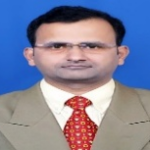Short-term course/Internship programme
for UG, PG, and Research scholars on
Remote Sensing and Geographical Information System (RS-GIS 2025)
Objectives
Objective of the programme: The Centre of Remote Sensing and Disaster Management (CRS- DM), School of Civil Engineering, KIIT Deemed to be University aims to provide participants with a comprehensive understanding of the fundamentals of Remote Sensing and Geoinformatics, including data acquisition, processing, analysis, and visualization through one- month training programme to students via online mode.
Overview
Unlock the power of Remote Sensing and GIS with our intensive short-term course! Dive into the world of satellite imaging, spatial analysis, and GIS, and discover how to harness these cutting-edge technologies to solve real-world problems. From environmental monitoring to urban planning, our course will equip you with the skills and knowledge to excel in this rapidly growing field. With hands-on training and expert instruction, you’ll gain a competitive edge in the job market and open doors to exciting career opportunities. Students will learn the principles and applications of remote sensing and GIS, including data acquisition, processing, analysis, and visualization.
Who can attend
UG and PG students of KIIT, other institutions, Scientists, Researchers, Urban planners, natural resource managers, environmental Monitoring expert etc.
Duration
30 Days for Summer Research Internship for UG/PG / Research Scholars
Course Fees
Course fee for students is Rs.4000/-
Batch Size
Minimum – 30
Certification
KIIT Certification
Resource Person
- Faculty form KIIT/Other Renowned Institute
- Industry Expert
Mode of Teaching
The training programme will be carried out in online mode by using any platform. To attend this class the following is needed:
- Uninterrupted high speed internet connection
- Laptop/desktop
- Free software resources
Tentative Content of Programme
| Day | Topics |
|---|---|
| Day 1 | Introduction to Remote Sensing, Basics of remote sensing, Types of satellite imagery |
| Day 2 | Introduction to GIS, Fundamentals of GIS, Spatial data types |
| Day 3 | Data Visualization, Creating maps and, visualizations |
| Day 4 | Remote Sensing Data Basics, Understanding satellite data, Image display and enhancement |
| Day 5 | GIS Data Basics, Understanding vector and raster data |
| Remote Sensing and DIP (Days 6-10) | |
| Day 6 | Satellite Imagery Interpretation, Understanding image characteristics, Visual interpretation |
| Day 7 | Image Enhancement, Techniques |
| Day 8 | Band Combinations and Indices Understanding band combinations Calculation of Different Indices (NDVI/NDWI/NDBI etc.) |
| Day 9 | Change Detection Basics Identifying changes in images |
| Day 10 | Image Classification Basics Supervised and unsupervised classification |
| GIS Fundamentals (Days 11-15) | |
| Day 11 | Vector Data Analysis Buffering and overlay analysis Vector data Digitization and editing and removal of error Encoding Attribute data and Joining process |
| Day 12 | Input Excel data in Arc –GIS (GPS point) DEM Modelling Hydrological Analysis using DEM data |
| Day 13 | Interpolation method IDW, Krigging etc. Fishnet creation KML to Shapefile creation |
| Day 14 | Spatial Data Editing Editing vector data |
| Day 15 | GIS Data Integration and Project Development Integrating different data sources Individual Project Development |
| Google Earth Engine (GEE) Applications | |
| Day 16 | Introduction to GEE and JavaScript Essentials Introduction to Google Earth Engine Fundamentals of Remote Sensing, Complete Guide to JavaScript for Earth Engine |
| Day 17 | Image and Feature Collection Handling Filtering and Accessing Image Collections Creating Mosaics and Composites Importing Raster and Vector Data Image Clipping Techniques Working with Feature Collections |
| Day 18 | Image Analysis and Time-Series Processing Understanding Earth Engine Objects Calculating Remote Sensing Indices (NDVI, NDWI, NDBI, BI, EMBI, etc.) Performing Computations on Image Collections (e.g., Area, Date) Using Reducers for Data Aggregation Generating NDVI Time-Series Charts |
| Day 19 | Visualization and Exporting Cloud Masking Techniques Visualizing Terrain Data (Elevation, Hill shade, Slope using NASA SRTM) Designing Map Layouts (Adding Legends, Titles) Exporting Data and Maps from Earth Engine |
| Day 20 | Image Classification and Accuracy Assessment Unsupervised Raster Classification Basic Supervised Classification Introduction to Machine Learning in Earth Engine Land Use and Land Cover (LULC) Mapping Performing Accuracy Assessment Enhancing Classification Results Exporting Classified Maps Area Calculation of Classified Outputs |
| Final Project and Certification (Days 21-25) | |
| Day 21 | |
| Day 22 | |
| Day 23 | |
| Day 24 | |
| Day 25 | Final Project and Certification |
Hands on training will be provided through Arc-Map, ERDAS Imagine
Target Audience
Prerequisites
- Basic knowledge of geography, computer science, and statistics
- Familiarity with Remote Sensing and Geoinformatics concepts and software
Course Outcomes
- Understand the principles and applications of remote sensing and geo-spatial science
- Develop skills in spatial analysis and visualization
- Apply remote sensing and geo-spatial science to real-world problems
- Enhance career opportunities in remote sensing and geo-spatial science
Course Coordinator

Dr. Rakesh Ranjan Thakur
Professor (Assistant-II), SCE, KIIT, DU
Email : rakesh.thakurfce@kiit.ac.in
